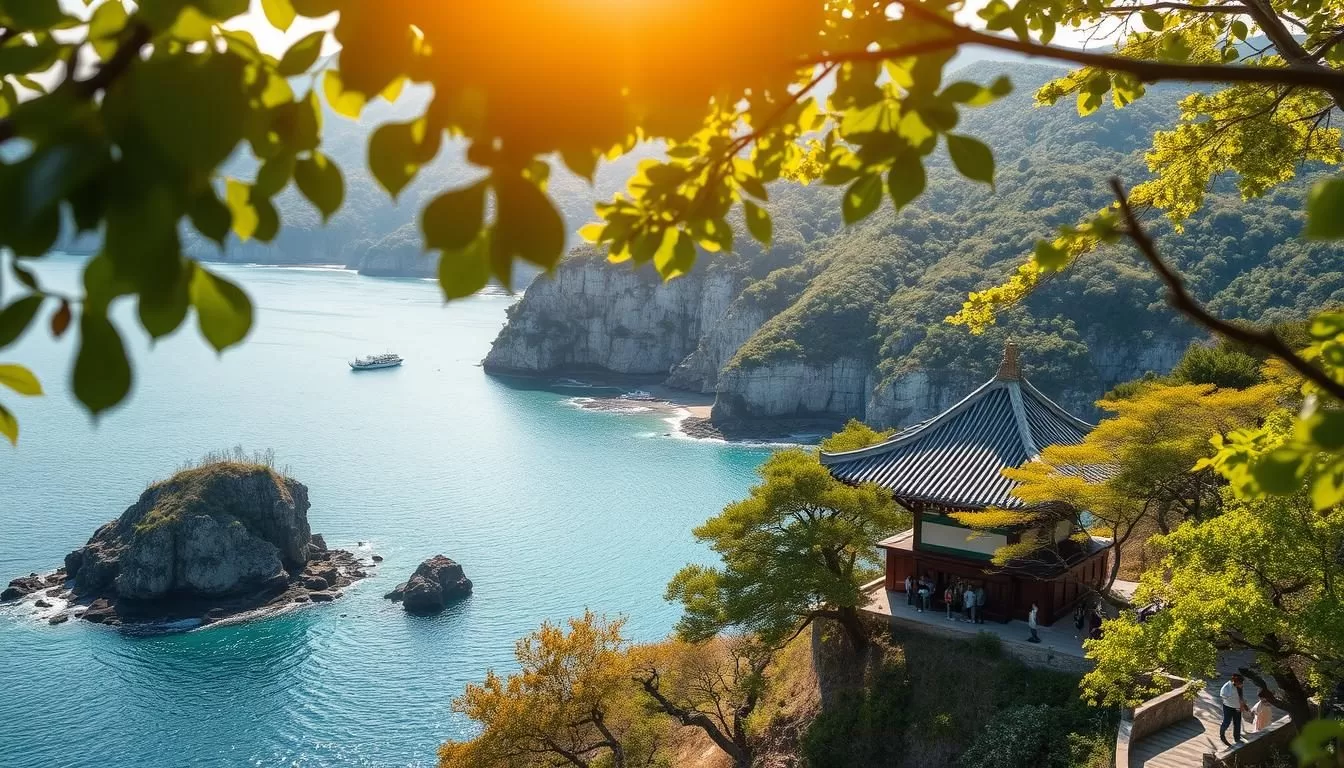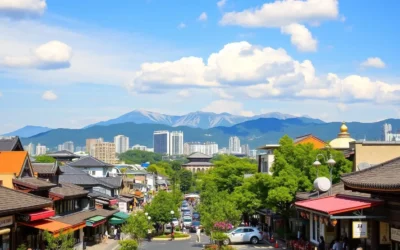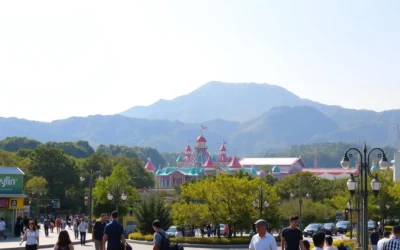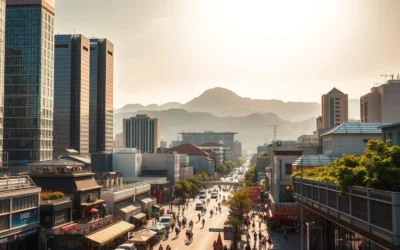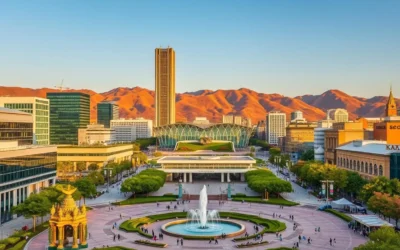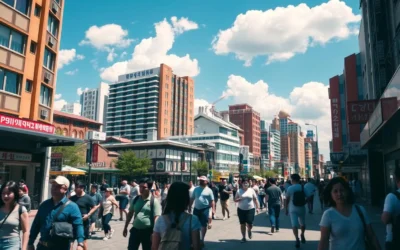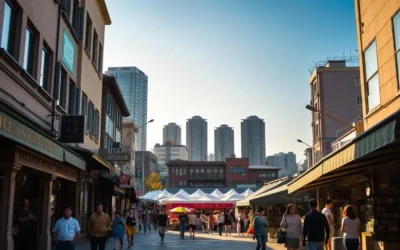Nestled in the southeastern part of South Korea, this captivating region is a treasure trove of history, culture, and natural beauty. As you explore Gyeongsang Province, you’ll uncover a blend of ancient traditions and stunning landscapes that make it a must-visit destination.
With its strategic location, this province has played a significant role throughout Korean history. Today, it offers travelers a unique experience, featuring UNESCO World Heritage sites, traditional villages, serene Buddhist temples, and breathtaking natural wonders. Whether you’re looking for cultural insights or outdoor adventures, this region has something for everyone.
As you plan your trip, get ready to immerse yourself in the authentic travel guide experience of this culturally rich country, exploring its top attractions and creating unforgettable memories.
Discovering South Gyeongsang Province: A Blend of History and Natural Beauty
As you venture into the southeastern part of South Korea, you’ll uncover the rich cultural heritage and picturesque landscapes of South Gyeongsang Province. This region, steeped in history and blessed with natural beauty, offers a unique blend of experiences that cater to diverse interests.
Where Is South Gyeongsang Province Located?
South Gyeongsang Province, also known as Gyeongnam, is strategically located in the southeastern corner of South Korea. It is bordered by the East Sea to the east and features a stunning coastline that splinters into peninsulas and islands. This geographical diversity not only enhances the region’s natural beauty but also contributes to its economic significance.
| Location | Features | Significance |
|---|---|---|
| Southeastern South Korea | Coastline, peninsulas, islands | Economic, natural beauty |
| Bordered by East Sea | Mountainous terrain | Rich cultural heritage |
Why Visit This Southeastern Region of South Korea?
South Gyeongsang Province is more than just a geographical location; it’s a gateway to understanding the history and culture of South Korea. Having served as the base of the Silla kingdom that ruled for nearly a thousand years, the region is replete with historical landmarks and cultural treasures. Visitors can explore regal tombs, wonderful temples, and experience the traditional Korean countryside where ancestral rites are still performed.
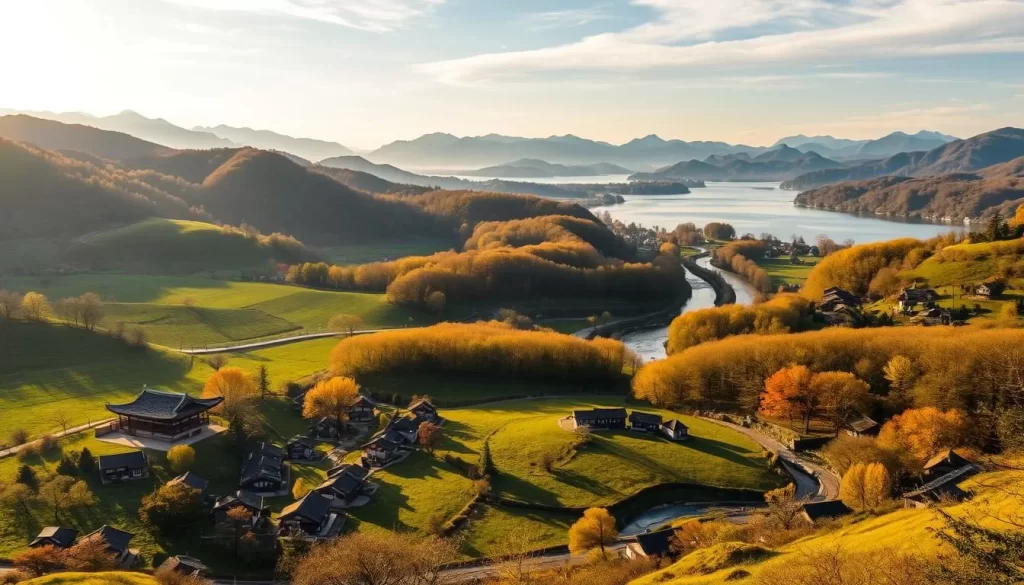
The province offers a perfect blend of natural beauty and historical significance, making it an ideal destination for travelers seeking authentic Korean experiences. You can appreciate the balance between the region’s rich historical past and contemporary Korean culture, providing a comprehensive view of the country’s evolution.
Whether you’re interested in history, nature, or culture, South Gyeongsang Province has something to offer. From the majestic mountains to the serene coastlines, this region is a testament to the country’s diverse landscapes and rich heritage.
Explore the Ancient Capital of Gyeongju
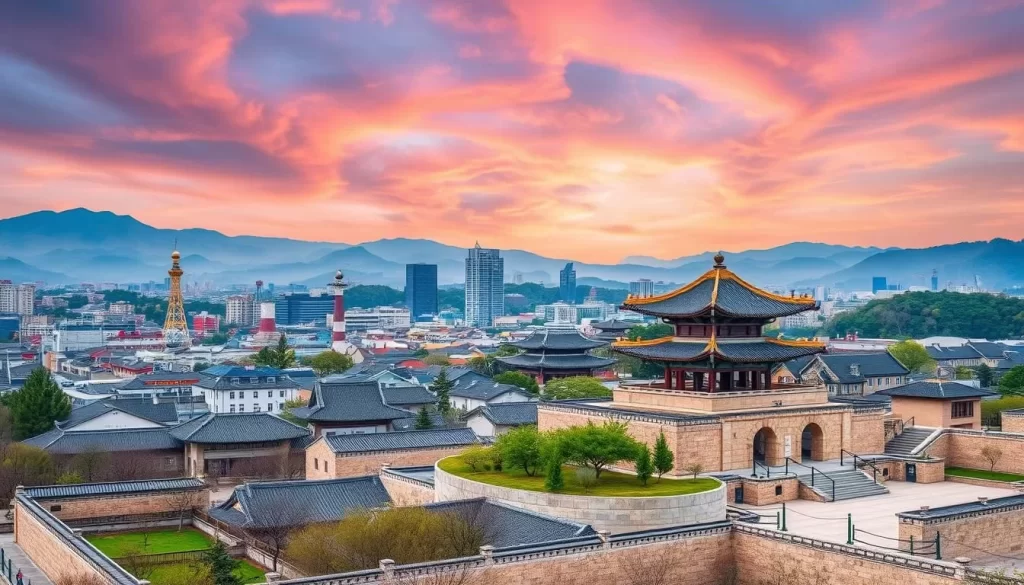
As you wander through Gyeongju, you’ll uncover the remnants of a thousand-year-old civilization that once flourished here. Gyeongju, the ancient capital of the Silla dynasty, is a city where history and culture blend seamlessly.
Royal Tombs and Silla Dynasty Treasures
Gyeongju is home to numerous royal tombs, distinctive grass-covered mounds that house the remains of Silla kings, queens, and nobles along with priceless treasures. These tombs are a testament to the city’s rich history and the legacy of the Silla dynasty, which ruled for nearly a thousand years from 57 BC to 935 AD.
Bulguksa Temple: A UNESCO World Heritage Site
One of Gyeongju’s most revered sites is Bulguksa Temple, a UNESCO World Heritage site and one of Korea’s most revered Buddhist temples. Featuring stunning stone pagodas and intricate architectural details, Bulguksa showcases the height of Silla culture and is a must-visit destination for anyone interested in history and time-less spirituality.
Namsan Mountain: An Open-Air Museum
Namsan Mountain is often described as an “open-air museum” due to its abundance of Buddhist sculptures, stone lanterns, and pagodas dating back to the Silla period. As you hike through Namsan, you’ll experience the seamless integration of historical artifacts with the natural landscape, earning Gyeongju its nickname as “the museum without walls.”
Gyeongju’s historical sites, including the royal tombs, Bulguksa Temple, and Namsan Mountain, offer a glimpse into a rich culture and history that spans centuries, making it a unique destination that blends the past with the present.
Visit the Underwater Tomb of King Munmu
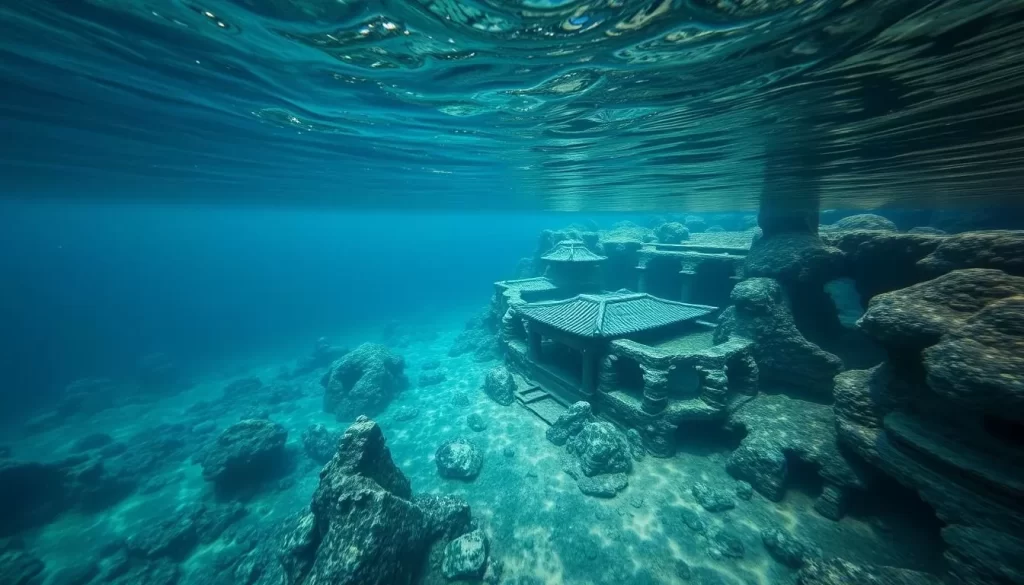
Located just off the eastern coast of Gyeongju lies the Underwater Tomb of King Munmu, a site steeped in history and legend. This unique monument is dedicated to King Munmu, who achieved the first unification of the Korean peninsula. The king’s final resting place is literally a stone’s throw from the coast, where he believed he would transform into a sea dragon to protect the country from invasion.
The story of King Munmu is deeply intertwined with the history of Korea, and visiting his underwater tomb offers a glimpse into the past. On his deathbed, King Munmu requested that his ashes be scattered on the offshore rocks, a wish that was fulfilled by his son, who also built the Gameunsa temple inland as a retreat for his father’s spirit.
The Legend of the Sea Dragon King
The legend surrounding King Munmu’s transformation into a sea dragon is a testament to his dedication to protecting his country. This story has become an integral part of Korean folklore, symbolizing the king’s eternal vigilance. As you explore the area, you’ll gain a deeper understanding of the experiences that have shaped the local culture.
Nearby Attractions Along the Coast
While visiting the Underwater Tomb of King Munmu, you can also explore other attractions along the coast. The two giant stone pagodas located 1km inland, marking the former site of Gameunsa temple, are a must-see. Additionally, you can enjoy the local seafood and possibly witness traditional shamanist ceremonies that occasionally take place on the beach, making for a memorable experience during your visit.
As you spend time exploring the Underwater Tomb of King Munmu and its surroundings, you’ll discover the rich history and cultural significance of this unique site. It’s an opportunity to delve into the past while enjoying the natural beauty of the area.
Experience Traditional Korean Life in Folk Villages
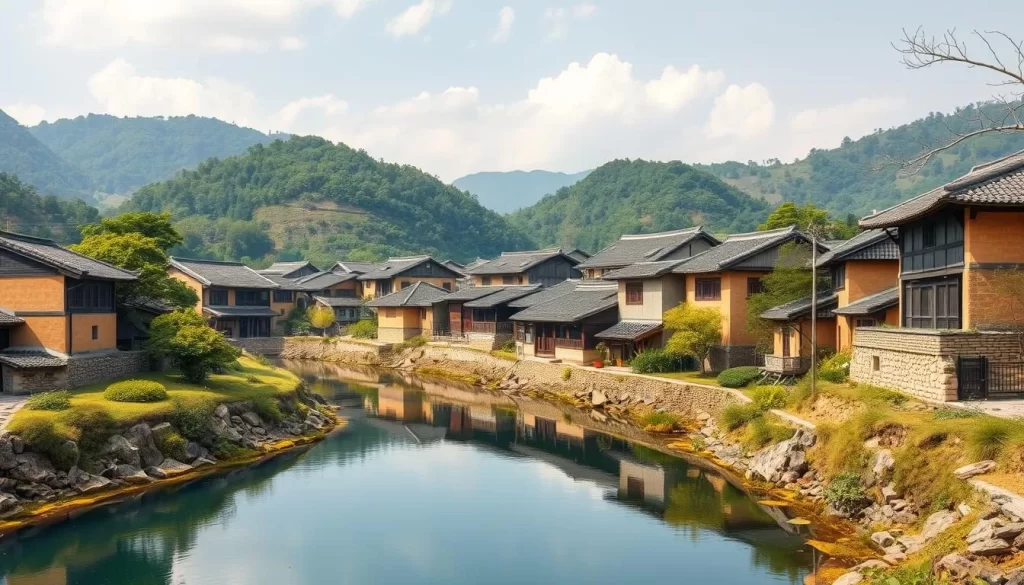
Immerse yourself in the rich cultural heritage of South Korea’s countryside by exploring its historic folk villages. These villages offer a unique glimpse into traditional Korean life, where time seems to stand still amidst the mud walls and thatched roofs.
The folk villages of South Gyeongsang Province are not just relics of the past; they are living, breathing communities where residents continue to maintain their traditional lifestyles. You can explore these villages, experiencing firsthand the slower pace of rural Korean culture.
Hahoe Folk Village: A Living Museum
Hahoe Folk Village is one of Korea’s most authentic and popular folk villages, featuring over a hundred traditional countryside houses. As you wander through the village, you’ll discover the charm of traditional Korean architecture and the serene beauty of the surrounding landscape.
The village is nestled along a meandering river, providing a picturesque backdrop for your exploration. You can spend hours inspecting the traditional buildings, relaxing by the river, and soaking up the local culture.
Key Experiences in Hahoe Folk Village:
- Explore over a hundred traditional Korean houses
- Experience the tranquil atmosphere of rural Korea
- Learn about the history and culture of the village
Yangdong Folk Village: Joseon Dynasty Architecture
Yangdong Folk Village is another significant cultural site, renowned for its well-preserved Joseon Dynasty architecture. The village layout follows traditional principles of pungsu (Korean feng shui), creating a harmonious and picturesque environment.
As you visit Yangdong, you’ll have the opportunity to admire the distinctive architecture of the Joseon period and gain insights into the lives of the people who lived there.
Highlights of Yangdong Folk Village:
- Appreciate the traditional architecture of the Joseon Dynasty
- Explore the village’s harmonious layout based on pungsu principles
- Experience the cultural heritage of the Joseon period
Discover Confucian Heritage at Historic Academies
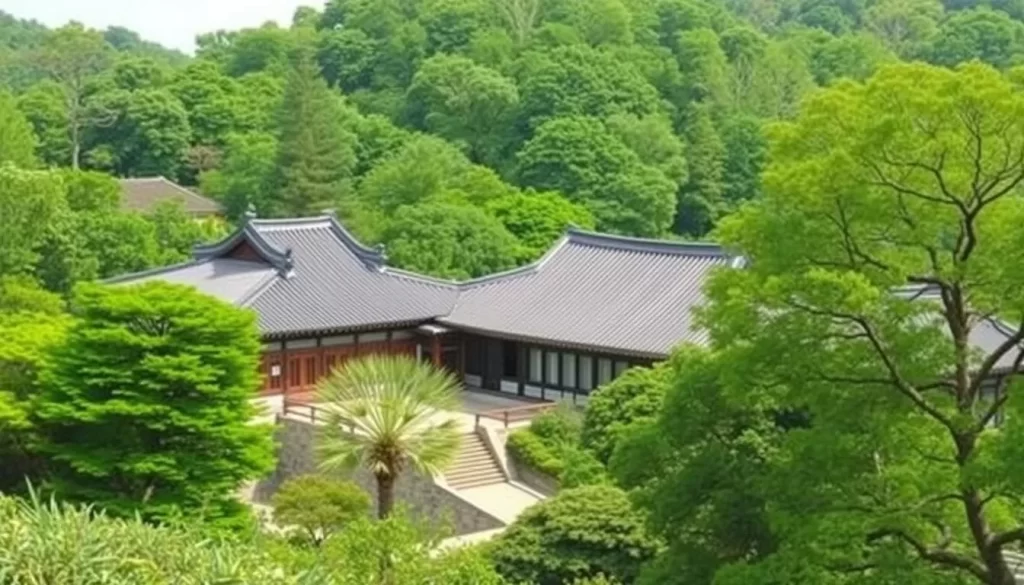
The countryside of South Gyeongsang Province is dotted with historic Confucian academies that offer a glimpse into Korea’s past. These institutions, known as seowon, were crucial in preparing students for government service examinations during the Joseon Dynasty. By visiting these academies, you’ll step into the scholarly world of Joseon Dynasty Korea and gain insight into the region’s rich history and culture.
Dosan Seowon: Yi Hwang’s Legacy
Dosan Seowon, established in 1574, is one of the most revered Confucian academies in Korea, honoring the legacy of Yi Hwang, a prominent Confucian scholar. This academy is a testament to the importance of Confucianism during the Joseon Dynasty. As you explore Dosan Seowon, you’ll experience the tranquility and scholarly atmosphere that defined this historic site.
Oksan Seowon: A Peaceful Retreat
Oksan Seowon is another significant Confucian academy that embodies the harmony between scholarly pursuits and natural contemplation. This peaceful retreat is set amidst stunning natural scenery, exemplifying the core principles of Confucian philosophy. By visiting Oksan Seowon, you’ll discover how these academies preserved not just knowledge but also Confucian cultural values that continue to influence Korean society.
Explore Buddhist Temples and Spiritual Sites
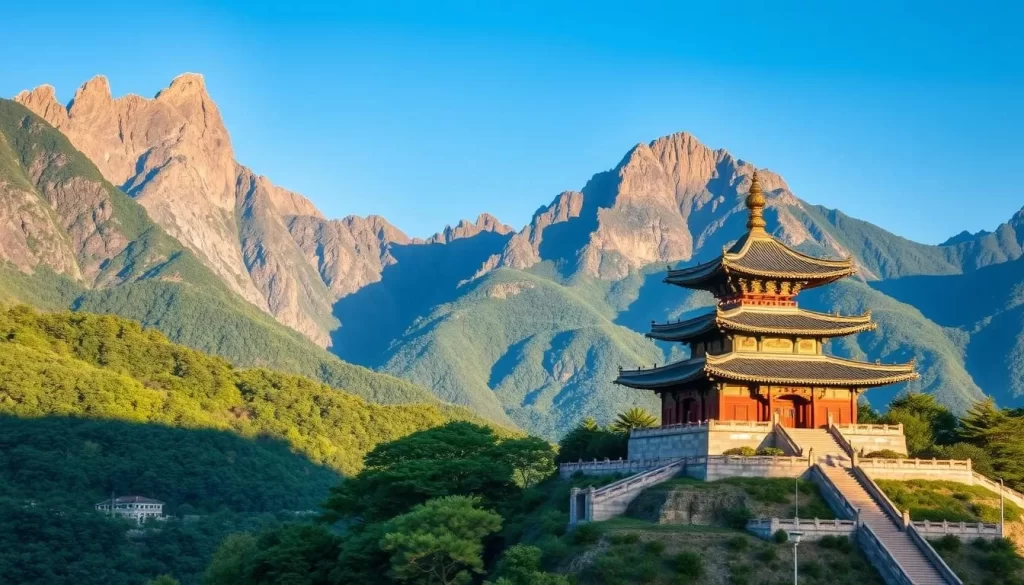
The spiritual essence of South Korea is palpable in the Buddhist temples scattered throughout South Gyeongsang Province’s picturesque countryside. As you explore these sacred sites, you’ll uncover a rich history and experience a profound sense of tranquility.
Haeinsa Temple and the Tripitaka Koreana
Haeinsa Temple is renowned for housing the Tripitaka Koreana, a collection of over 80,000 wooden blocks containing Buddhist scriptures. Carved in the 13th century, this remarkable achievement in craftsmanship and devotion is notable for its precision, with not a single error across 50 million Chinese characters.
The process of creating the Tripitaka Koreana was meticulous. The wood was soaked in seawater for three years, then sheltered from sun and rain but exposed to wind for another three years before carving began. This dedication to detail has made the Tripitaka Koreana a revered treasure in Buddhist culture.
Golgulsa Temple: Home of Seonmudo Martial Arts
Golgulsa Temple is a unique spiritual site that combines Buddhism with physical discipline through Seonmudo, a Zen-based martial art. Visitors can experience this distinctive practice, which integrates meditation with physical training, offering a holistic approach to spiritual growth.
Girimsa Temple: Off the Beaten Path
For those seeking a more solitary and serene experience, Girimsa Temple offers a tranquil sanctuary surrounded by rice paddies and farmland. This temple provides a peaceful retreat from the crowds, allowing visitors to immerse themselves in the natural beauty and spiritual ambiance of the countryside.
Exploring these Buddhist temples in South Gyeongsang Province offers a journey into the heart of South Korea’s spiritual heritage. Each site provides a unique perspective on the country’s history, culture, and the enduring legacy of Buddhism.
Hike Through South Gyeongsang Province’s Natural Wonders
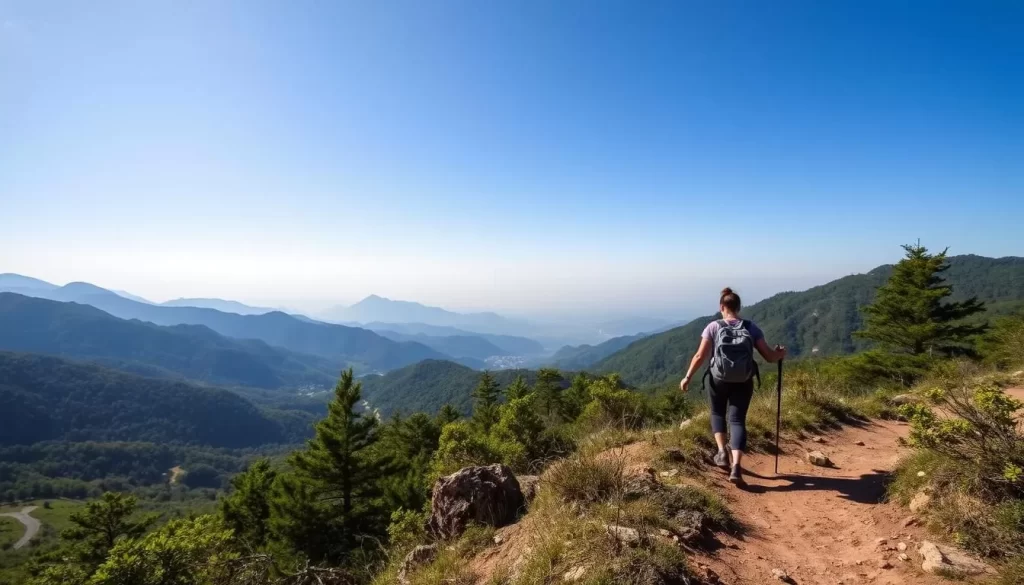
From the towering peaks of Jirisan to the serene beauty of Hallyeo Haesang, South Gyeongsang Province is a nature lover’s paradise. You can explore the diverse landscapes that make this region so unique.
Jirisan National Park: Korea’s Largest Mountain Reserve
Jirisan National Park is a haven for hikers, with its extensive network of trails and mountain shelters that make multi-day treks possible. As Korea’s largest national park, it offers breathtaking scenery and a chance to connect with nature. You can hike through the park’s lush forests and enjoy the beauty of the surrounding countryside.
The park’s diverse landscapes, from dense forests to alpine meadows, provide a perfect nature experience. With its well-marked trails and shelters, Jirisan is an ideal destination for both seasoned hikers and those looking for a more leisurely walk.
Hallyeo Haesang National Park: Coastal Beauty
Hallyeo Haesang National Park offers a different kind of natural beauty, with its stunning coastline and islands. You can take a ferry to remote islands where traditional life continues unchanged, offering a glimpse into Korea’s past. The park’s coastal scenery is breathtaking, with cliffs, peninsulas, and islands to explore.
As you explore Hallyeo Haesang, you’ll appreciate the beauty of the South Gyeongsang Province‘s coastline. The park is a perfect nature reserve, with its diverse marine life and pristine beaches.
Whether you’re hiking in Jirisan or exploring the islands of Hallyeo Haesang, South Gyeongsang Province is a national park lover’s dream. The region’s diverse landscapes and natural beauty make it an ideal destination for nature lovers.
South Gyeongsang Province, South Korea: Best Things to Do for Urban Explorers
Urban explorers will find plenty to enjoy in South Gyeongsang Province, from shopping and dining to historical landmarks and cultural events. The region’s cities offer a unique blend of traditional and modern attractions that cater to diverse interests.
Daegu: Shopping, Culture, and Cuisine
Daegu, South Korea’s fourth-largest city, is a major business hub with a core that functions like one large shopping mall. The city is famous for its specialized shopping districts, such as Herbal Medicine Street, Steamed Rib Meat Street, and Rice Cake Street, offering a variety of culinary delights. Visitors can also explore Shoe Street, Sock Street, or Washing Machine Appliance Street, each catering to different needs. Daegu’s rich culture and history are evident in its numerous cultural attractions, making it an ideal destination for tourists looking to experience urban Korea.
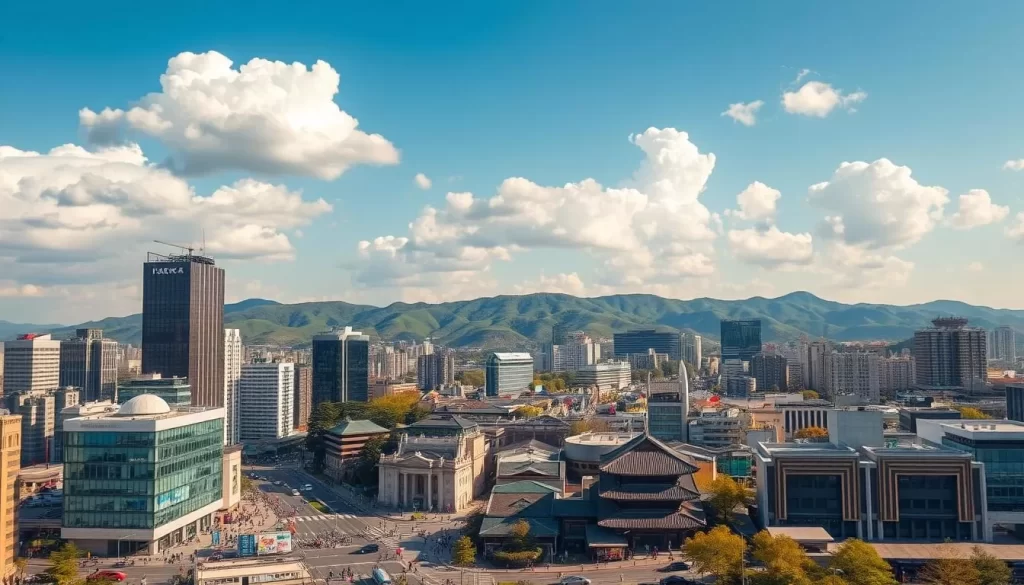
Jinju Fortress: History and Scenic Views
Jinju Fortress is a historical site that commemorates a famous battle against Japanese invaders. Today, it offers visitors beautiful walking paths and traditional pavilions with scenic views of the river. The fortress is not only a significant cultural attraction but also a place of beauty, making it a must-visit destination for anyone interested in history and natural beauty.
Both Daegu and Jinju showcase the unique urban cultures of South Gyeongsang Province, with their specialty foods, shopping districts, and local traditions. These cities serve as convenient bases for exploring the surrounding countryside while offering modern amenities and cultural attractions for visitors.
Conclusion: Planning Your Perfect Trip to South Gyeongsang Province
From the ancient Silla Dynasty treasures to the serene natural parks, South Gyeongsang Province is a traveler’s paradise. As you plan your trip to this diverse region of South Korea, balancing visits to historical sites, natural wonders, and urban experiences is key.
Consider visiting during spring (April-May) or fall (September-October) for the most pleasant weather and stunning natural beauty. With various transportation options available, including the efficient Korean rail system and intercity buses, exploring the province is convenient.
With accommodation options ranging from traditional hanok stays to modern hotels, you can experience both historic and contemporary aspects of Korean life. Sampling the local cuisine, from Jinju’s famous bibimbap to fresh seafood, is a must. By planning your trip carefully, you’ll uncover the rich heritage and natural beauty that makes South Gyeongsang Province one of the best regions to visit in South Korea.
The above is subject to change.
Check back often to TRAVEL.COM for the latest travel tips and deals.
